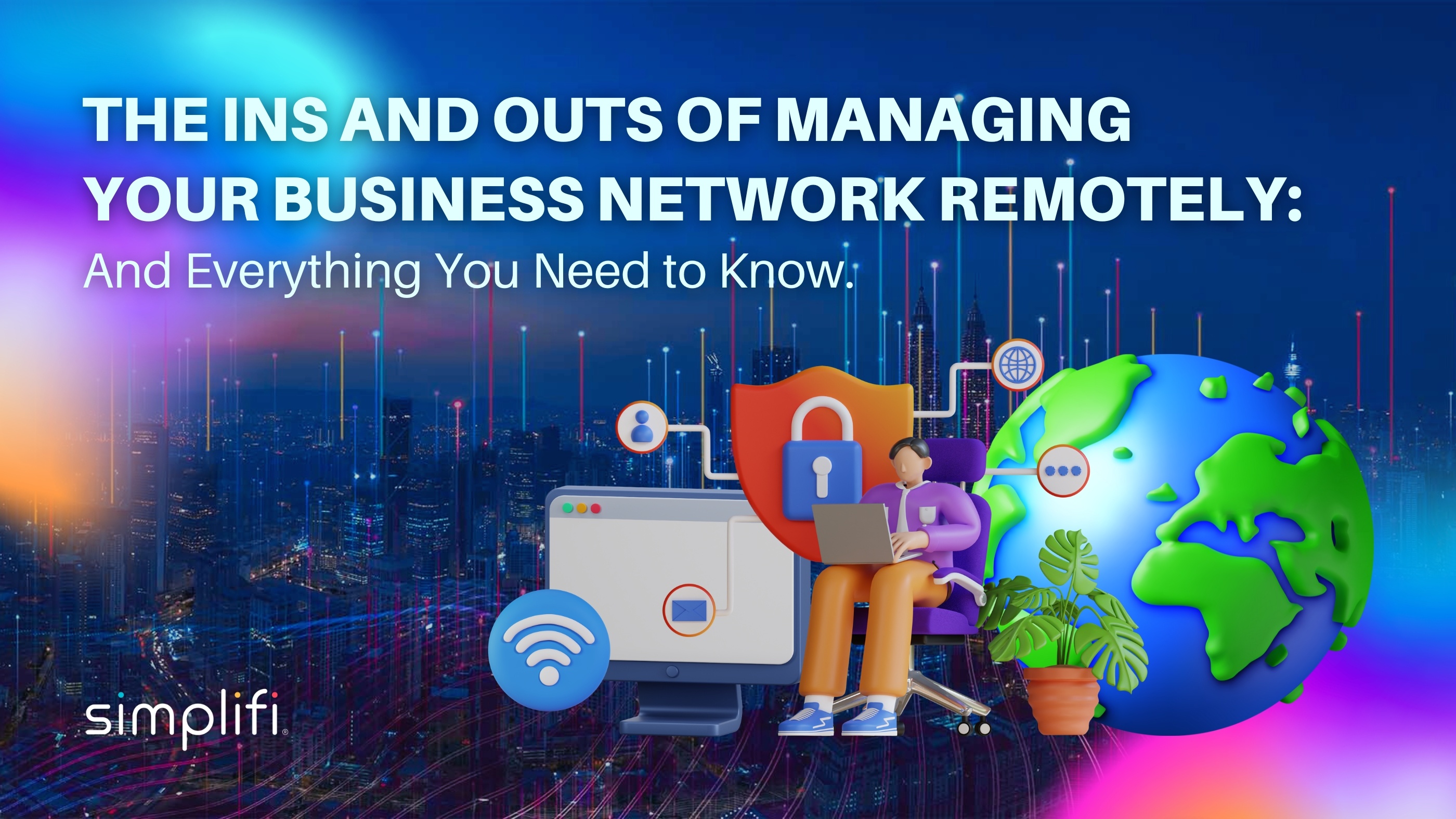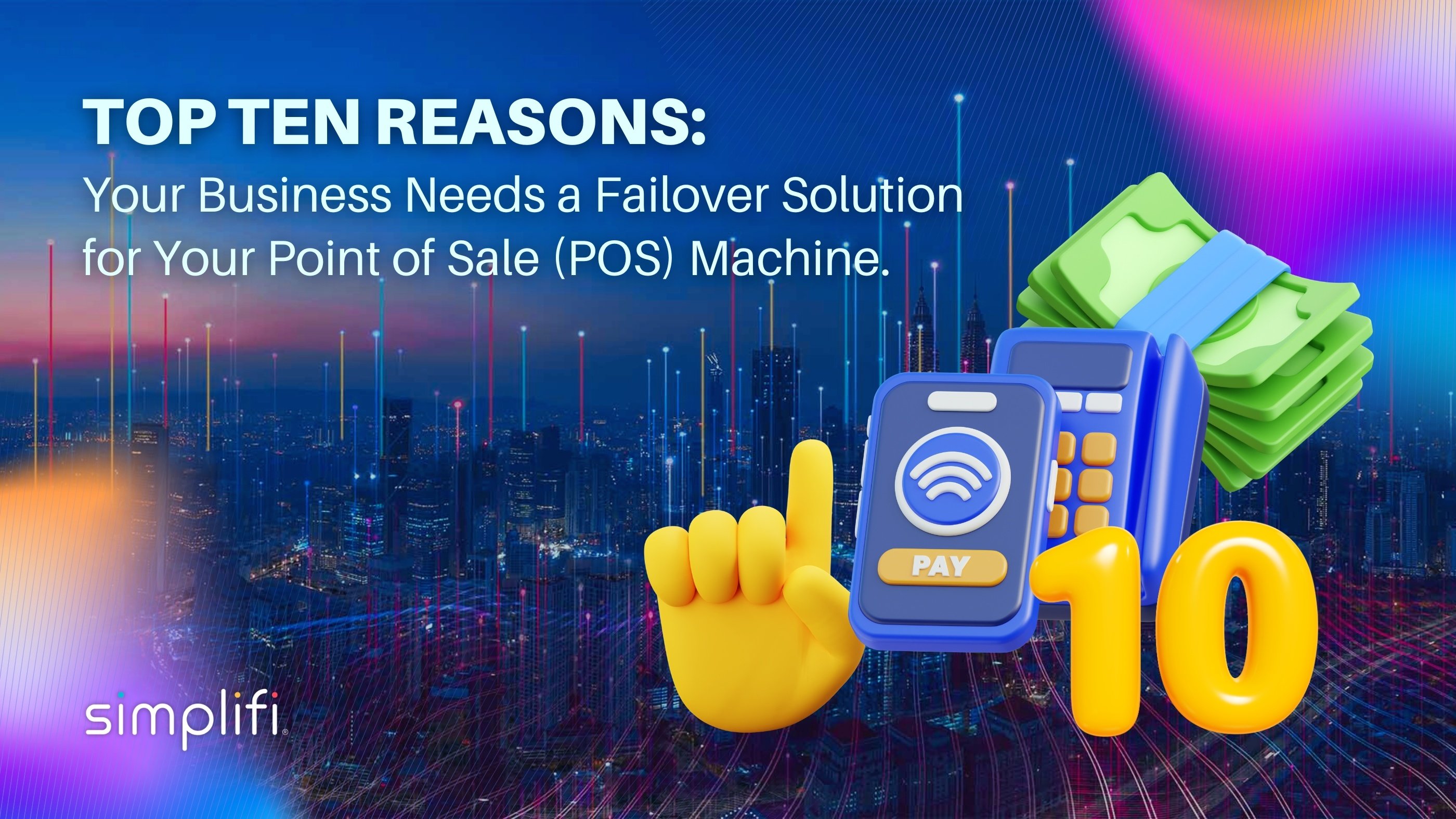Unlocking Efficiency: Why Your Business Needs a Secure Fixed Wireless Network Solution for Remote Employees.
In today's fast-paced business world, connectivity is king. But what happens when your remote employees struggle with unreliable internet...
6 min read
Mike Haley 8/30/24 2:23 PM

Imagine waking up to a flurry of panicked messages from your team: "The network's down!" Your heart races as you realize you're miles away from the office. But what if you could resolve this crisis with just a few clicks, all from the comfort of your home? Welcome to remote network management – your key to maintaining a robust business infrastructure, no matter where you are.
In today's digital landscape, the ability to manage your business network remotely isn't just a convenience; it's a necessity. Whether you're dealing with a global pandemic, expanding to multiple locations, or simply embracing the flexibility of remote work, mastering this skill can be the difference between smooth sailing and constant firefighting. But where do you start? How do you ensure your network stays secure and efficient when you can't physically access it?
Don't worry – we've got you covered. In this comprehensive guide, we'll walk you through everything you need to know about managing your business network remotely. From understanding the basics to exploring cutting-edge tools and techniques, you'll discover how to optimize performance, troubleshoot issues, and stay ahead of future trends. Get ready to transform your approach to network management and take control of your business's digital lifeline – no matter where you are.
Business network management involves overseeing and controlling your company's IT infrastructure from a distance. It consists of monitoring, maintaining, and optimizing your network systems without being physically present at the office or data center. As more businesses embrace remote work, understanding how to manage your network remotely has become crucial for ensuring smooth operations and maintaining productivity.
While remote network management offers numerous advantages, it also comes with its own set of challenges. You may need help diagnosing hardware issues, securing sensitive data, and maintaining consistent network performance across various locations. Additionally, you'll need to navigate potential connectivity issues and ensure that all remote workers have secure access to necessary resources. Overcoming these obstacles requires robust tools, well-defined processes, and a proactive approach to network management.
Despite the challenges, remote network management provides significant benefits for your business. You'll enjoy increased flexibility, as you can monitor and maintain your network from anywhere, at any time. This approach also leads to cost savings, as you reduce the need for on-site IT personnel and can quickly respond to issues before they escalate. Moreover, remote management allows you to scale your network infrastructure more efficiently, adapting to your business's changing needs without being constrained by physical limitations.
By embracing remote network management, you'll be better equipped to handle the demands of today's distributed workforce while ensuring your IT infrastructure remains secure, efficient, and reliable. As we move forward, we'll explore the essential tools to help you manage your business network remotely.
You'll need robust tools to ensure smooth operations and maintain security when managing your business network remotely. Here are the essential tools you should have in your arsenal:
VPNs are indispensable for secure remote access to your business network. VPNs protect sensitive data from prying eyes by creating an encrypted tunnel between your remote device and the company network. When selecting a VPN solution, consider factors like encryption strength, ease of use, and scalability to accommodate your growing business needs.
Cloud-based platforms allow you to manage your network from anywhere at any time. These tools centralize network management tasks, allowing you to monitor, configure, and troubleshoot your network infrastructure through a single interface. Look for platforms that offer real-time visibility, automated alerts, and integration capabilities with your existing systems.
To keep your network running smoothly, you'll need comprehensive monitoring tools. These solutions help you track network performance, identify bottlenecks, and detect potential issues before they escalate. Opt for tools that provide detailed analytics, customizable dashboards, and proactive alerting features to stay ahead of network problems.
Router management dashboards give you granular control over your network's traffic flow. With these tools, you can easily configure router settings, manage bandwidth allocation, and implement security policies. Look for dashboards that offer intuitive interfaces and support remote access, enabling you to make quick adjustments to your network configuration as needed.
By leveraging these essential tools, you'll be well-equipped to manage your business network remotely, ensuring optimal performance and security. Next, we'll explore optimizing your network performance from afar, building on the foundation these tools provide.
Now that you're familiar with the essential tools for remote network management let's explore how to optimize your network performance from a distance. By implementing proactive strategies and leveraging advanced techniques, you can ensure your business network operates at peak efficiency, even when you're not physically present.
To avoid potential issues, implement a robust monitoring and alerting system. Set up automated tools that track your network's health, performance metrics, and security status. These tools will notify you of any anomalies or potential problems before they escalate, allowing you to take swift action. By being proactive, you can minimize downtime and maintain optimal network performance.
Harness the power of cloud-based load balancing to distribute network traffic evenly across your servers. This approach helps prevent bottlenecks and ensures that every single server becomes manageable. By implementing cloud-based load balancing, you can improve response times, enhance reliability, and scale your network resources as needed, all while managing your infrastructure remotely.
Implement Quality of Service (QoS) policies to prioritize critical network traffic. You can ensure that essential applications and services receive the necessary bandwidth and resources by categorizing and prioritizing different data types. This strategy is particularly crucial when managing distributed networks, as it helps maintain performance for mission-critical operations across various locations.
Effectively managing your bandwidth is key to optimizing network performance remotely. Utilize bandwidth management tools to monitor usage patterns, identify bandwidth-hungry applications, and set limits where necessary. Implementing these techniques can prevent bandwidth congestion, improve overall network speed, and ensure your resources are used efficiently across your distributed network.
With these optimization strategies in place, you'll be well-equipped to maintain peak network performance, regardless of your physical location. Next, we'll explore how to troubleshoot common remote network issues, ensuring you can quickly resolve any problems.
Now that you've optimized your network performance, it's crucial to be prepared for potential issues that may arise. Let's explore some common remote network problems and how you can effectively troubleshoot them.
Software conflicts can significantly impact your remote network's performance. To resolve these issues:
Regularly update your network management software and ensure compatibility with all devices.
Use network monitoring tools to identify conflicting applications.
Implement a system for testing software updates before full deployment.
Hardware failures can cause major disruptions in your remote network. Here's how you can address them:
Set up automated alerts for hardware issues using your remote network management tools.
Maintain an inventory of spare parts for critical hardware components.
Implement redundancy measures to minimize downtime during hardware failures.
Slow network speeds can hinder productivity. To tackle this issue:
Use network performance monitoring tools to identify bottlenecks.
Optimize bandwidth allocation for critical applications.
Consider upgrading your network infrastructure if slowdowns persist.
Connectivity issues can be frustrating for remote workers. Here's how you can address them:
Implement a Virtual Private Network (VPN) for secure and stable connections.
Provide clear troubleshooting guides for common connectivity issues.
Set up a dedicated support channel for urgent connectivity problems.
Addressing these common remote network issues proactively will ensure a smoother experience for your team. Next, we'll explore the exciting future trends in remote network management that you should watch.
As you continue to navigate the evolving landscape of remote network management, staying ahead of the curve is crucial. Let's explore some exciting trends in managing your business network remotely.
The rollout of 5G networks is set to revolutionize remote network management. With its lightning-fast speeds and low latency, 5G will enable you to manage your network more efficiently. When accessing your network remotely, you'll experience near-instantaneous response times, making real-time monitoring and adjustments a breeze. Moreover, 5G's increased bandwidth will allow you to handle more devices and data, expanding your network's capabilities without compromising performance.
Edge computing is another game-changer you'll want to watch. Processing data closer to its source can significantly reduce latency and improve response times. This approach will be particularly beneficial for remote network management tasks that require real-time decision-making. You'll be able to analyze and act on data more quickly, enhancing your network's overall efficiency and responsiveness.
As the number of IoT devices in your business network grows, managing them remotely will become increasingly important. Future remote network management solutions will likely offer more robust IoT device management capabilities. You'll be able to easily monitor, update, and secure a vast array of connected devices from a single platform. This integration will simplify your network management tasks and help you maintain a secure, efficient IoT ecosystem.
With these emerging trends, you can take your remote network management to new heights. As we move forward, it's clear that the future of managing business networks remotely is not just about maintaining connectivity but about leveraging cutting-edge technologies to optimize performance and security.
Managing your business network remotely is no longer a luxury but a necessity in today's digital landscape. By embracing the right tools and strategies, you can effectively monitor, optimize, and troubleshoot your network from anywhere in the world. Remote network management is an evolving field, so staying informed about the latest trends and technologies is crucial for maintaining a competitive edge.
As you implement remote network management solutions, focus on creating a robust infrastructure that can adapt to your business's changing needs. Prioritize security, invest in user-friendly tools, and continuously train your team to use these remote capabilities. By doing so, you'll not only ensure smooth operations but also position your business for future growth and success in an increasingly connected world.

In today's fast-paced business world, connectivity is king. But what happens when your remote employees struggle with unreliable internet...

In today's digital landscape, a reliable internet connection is the lifeblood of any business. Yet, many organizations need consistent connectivity,...

In today's fast-paced retail environment, every second counts. Imagine a bustling store, customers lined up at the checkout, and suddenly—your Point...